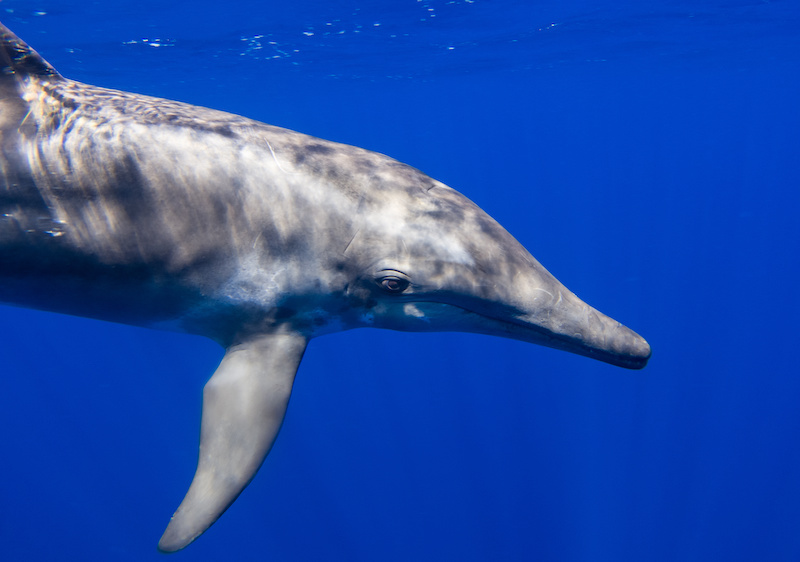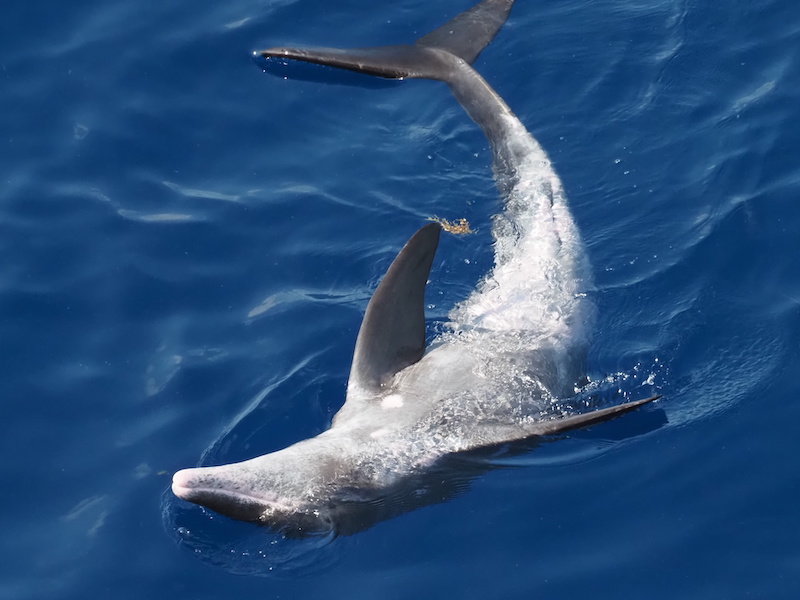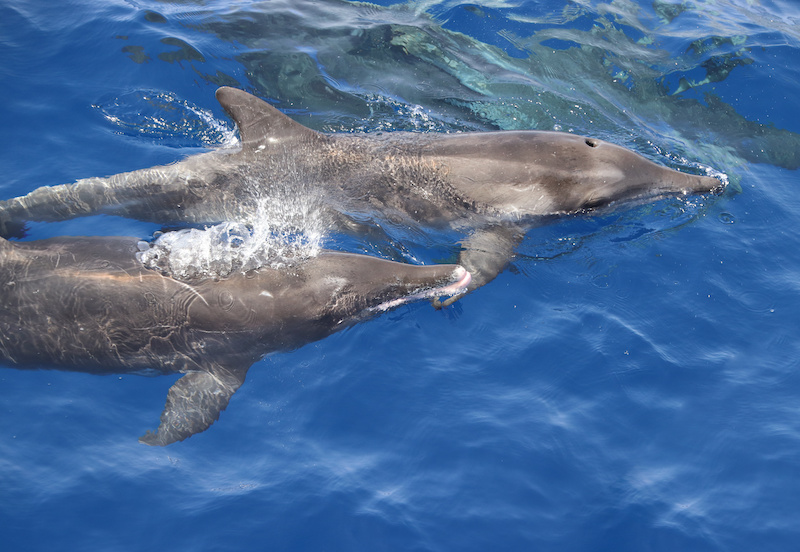
This text delves into the mysterious world of the Steno rostrated dolphin (Steno bredanensis), a fascinating yet lesser-known species in the waters of the Caribbean. We will explore the unique characteristics of this dolphin, its natural habitat, reproductive habits, and diet, providing a comprehensive insight into this amazing marine creature.
Characteristics of the Steno Rostrated Dolphin
The Steno rostrated dolphin (Steno bredanensis), a distinctive member of the Delphinidae family, is particularly notable for its unique morphology and adaptive abilities. This marine mammal, measuring between 2 and 2.5 meters in length, is distinguished by a robust body and a narrow, elongated rostrum, a feature that gives it its name. Its color varies from dark gray to slate blue on the back, with lighter flanks and a white belly, providing natural camouflage in the water. A distinctive feature of this species is the absence of a prominent frontal bulb above the beak, a common characteristic in other dolphins.
These cetaceans have powerful pectoral fins and a falciform dorsal fin, giving them remarkable agility in the water. Regarding their longevity, Steno rostrated dolphins can live up to 30-40 years, a quite advanced age for a dolphin. Their hearing acuity and echolocation skills are extremely developed, allowing them to navigate and hunt efficiently in various aquatic environments.
These dolphins are also known for their social behavior, living in groups called “pods” , where they communicate using complex whistles and clicks. Adapted to a wide range of marine habitats, Steno rostrated dolphins demonstrate great adaptability, making them capable of surviving and thriving in different environments, from shallow coastal waters to open and deep oceanic zones. Their resilience and behavioral flexibility make them a key species in the study of marine biodiversity.

Habitat of the Steno Rostrated Dolphin
The Steno rostrated dolphin (Steno bredanensis) is known for its high habitat adaptability. Preferring warm waters, it is predominantly found in the tropical and subtropical regions globally, including the vast expanse of the Caribbean Sea. These dolphins are frequently observed in coastal areas, but their ability to swim in deep waters allows them to explore and colonize a wide range of marine habitats.
Their presence in diverse environments, from coral reefs to pelagic zones in the open sea, attests to their ability to adapt to different types of food resources and ecological conditions. The diversity of their habitat also reflects their exploratory behavior and the need to access a varied diet. Protecting these diverse habitats is crucial for the conservation of the Steno rostrated dolphin, a key species for the health of Caribbean marine ecosystems.
Reproduction in the Steno Rostrated Dolphin
The reproduction of the Steno rostrated dolphin remains a relatively mysterious area, but it is known to exhibit characteristics similar to other dolphin species. Females reach sexual maturity between 6 and 12 years, while males typically mature a bit later. These dolphins do not seem to have a fixed breeding season, potentially mating throughout the year. Gestation lasts about 12 months, after which the female gives birth to a single calf. The calf relies heavily on its mother for food and protection during the first years of its life, a crucial period for its development and learning of social and hunting skills.
The mother teaches her calf how to interact with other group members and navigate in their vast habitat. The low frequency of births in Steno rostrated dolphins underscores the importance of each birth for the survival of the species and highlights the need to protect these sensitive animals and their habitats from environmental threats.

Diet of the Steno Bredanensis
The Steno Bredanensis dolphin has a diverse and opportunistic diet, essential for its survival in the various marine environments it inhabits. These dolphins are primarily piscivores, feeding on a wide variety of fish, especially those living in pelagic environments. In addition to fish, their diet includes squid and other cephalopods, key elements of their diet in deep waters. Steno Bredanensis dolphins are also known to consume crustaceans and small marine invertebrates.
Their hunting methods are adaptive and may vary depending on the habitat and prey availability. They often hunt in small groups, using cooperative and coordinated techniques to effectively trap their prey. Their skills as adept hunters are complemented by their echolocation ability, allowing them to detect prey in conditions of low underwater visibility. This varied diet and flexible hunting strategy contribute to their success as a species in different marine environments, from coral reefs to deep waters.
Discover all the cetacean species that can be found near the coasts of Martinique: